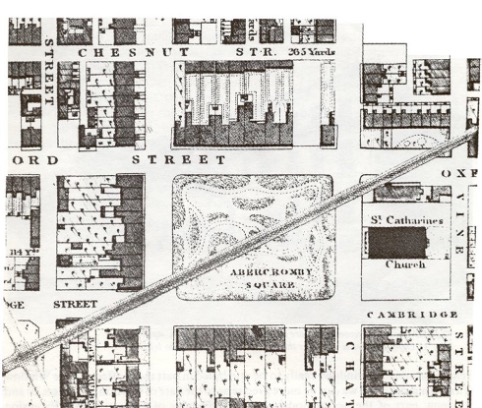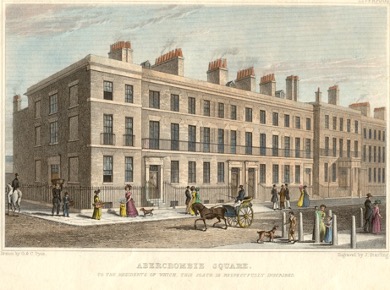History of 19-23 Abercromby Square
Panel 3: Liverpool as a centre of trade in the 19th century
The Lancashire mills often exported the completed products back to America where the cotton originated. Legalised slavery continued on the American cotton plantations until 1865 and Liverpool merchants continued to import cotton long after slavery was abolished.
Designed by John Foster Senior and adapted by William Culshaw, AS began construction in the 1820s. What is now number 9 appears in Gores’ Directory of Liverpool for 1821 as ‘Abercrombie’ Square, though the spelling changed by 1828 to ‘Abercromby’. Between 1824 and 1828, number 20, 21, 22 and 23 were built with number 19 designed and added between 1862 –1863.
John Foster Senior was Senior Surveyor to the Corporation of Liverpool. He was notably responsible for the completion and expansion of various Liverpool docks including Prince’s Dock and George’s Dock. William Culshaw was a local architect who practised and built many buildings in Liverpool and the local area. One of the largest buildings he designed with his partner Henry Sumners was the Midland Railway Goods Warehouse which later became the Conservation Centre for the National Museums of Liverpool in 1995.
Number 19-23 is located at the Northern side of AS, compromising of a terrace of former Georgian housing of three storeys with sunken basements protected by iron railings. Entrances have angled Doric pilasters with number 19 and 23 having Doric porches. Number 19 is seven bays wide and larger than its neighbours. The first- floor window above its porch has architrave, frieze, and consoled pediment. Number 19 was added in 1862, the home for Charles Kuhn Prioleau, an American merchant and banker.

Fig 3.1 Detail of AS from the Plan of Liverpool by Michael Gage 1836 (Liverpool Central Library and Archives)

Fig 3.2 Abercromby Square 1835 G&C Pynelick (Liverpool Central Library and Archives)
Link: Historic England: The Textile Mills of Lancashire
References
Allan, A.R. (1986) The Building of Abercromby Square, The University of Liverpool. 9.
Gore, J. (1827) Gores’ Liverpool Directory and its Environs. 266. British online Archives. https://microform.digital/boa/documents/1386/gores-directory-of-liverpool-and-its-environs-1827
University of Liverpool. (2018) Master Plan estate strategy 2026+ Campus Built Heritage 34, Feilden Clegg Bradley Studios. 34-35